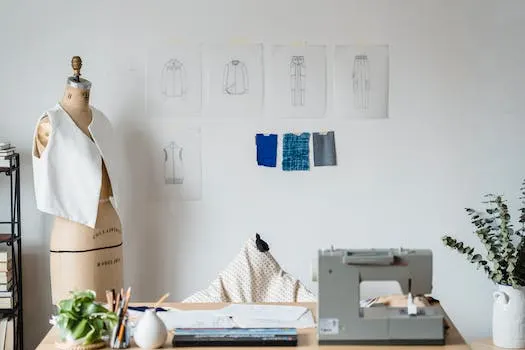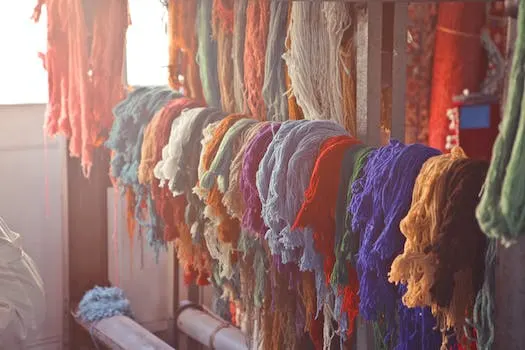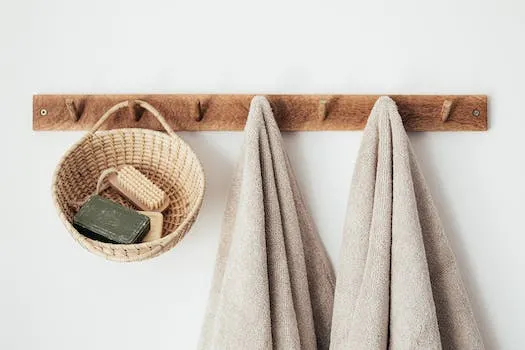
How to Incorporate Sustainable Fashion into Your Wardrobe
The fashion industry has a significant environmental impact, from the water used in production to the microplastic pollution created by synthetic fabrics. To reduce this impact, it is important to look for scientific targets and buy less clothing. A recent report proposes the idea of a “wellbeing wardrobe” that favors human and environmental wellbeing over sales increases. This article will provide tips and tricks on how to make your wardrobe more sustainable, from sourcing ethically-made fabrics to choosing second-hand clothing. By making conscious decisions about our fashion choices, we can help reduce the negative impacts of the industry on our planet.
Choose Ethically-Made Fabrics
When it comes to making your wardrobe more sustainable, choosing ethically-made fabrics is an important step. Natural fibers such as organic cotton, hemp, and bamboo are great options for those looking to make a positive environmental impact. Additionally, look for fabrics that have been certified by organizations like GOTS (Global Organic Textile Standard) or OEKO-TEX (International Association for Research and Testing in the Field of Textile Ecology). Organic cotton is one of the most natural fabrics available and is grown without pesticides or synthetic fertilizers and processed with no chemicals. Recycled cotton also helps reduce textile waste while requiring fewer resources than conventional or organic cotton. Other sustainable fabric choices include Supima® and other recycled materials like polyester made from plastic bottles.
When shopping for ethical fabrics, it's important to consider not only the material but also how it was produced. Sustainable fabrics are often made from natural or recycled materials with an aim to reduce harm through production processes, fiber properties, water usage, energy consumption and more. Organic cotton is a great option as it requires no pesticides or synthetic fertilizers during growth nor any chemicals during processing; similarly recycled cotton helps prevent additional textile waste while using fewer resources than conventional or organic varieties. Hemp and bamboo are two other popular natural fibers that can be used in clothing production; both require minimal water usage compared to traditional crops like cotton which makes them ideal eco-friendly alternatives when shopping sustainably. Additionally look out for labels certified by organizations such as GOTS (Global Organic Textile Standard) or OEKO-TEX (International Association for Research and Testing in the Field of Textile Ecology). Printful's sustainable fabric contains at least 30% recycled material which helps reduce our reliance on virgin resources while still providing quality garments that last longer than fast fashion items typically do! Finally Supima® offers a luxurious feel with its extra long staple fibers making it perfect for high end fashion pieces - all without compromising on sustainability standards!
By taking into account these factors when selecting your wardrobe staples you can help lessen your personal impact on the environment while still looking stylish! Whether you opt for Organic cotton tees; hemp trousers; bamboo blouses; recycled polyester jackets; Supima® sweaters - there are plenty of options available so you can choose ethically-made fabrics that fit your style perfectly!
Choose Second-Hand Clothing
One way to incorporate sustainable fashion into your wardrobe is to choose second-hand clothing. Shopping for pre-owned clothes is a great way to reduce the amount of new clothing being produced, which in turn reduces the amount of carbon emissions created during production. Plus, it’s an excellent opportunity to find unique pieces that you won’t find anywhere else. You can look for second-hand stores in your area or search online for shops that ship to your location.
Second-hand clothes have a big positive social and environmental impact on our planet. They reduce carbon emissions, save resources such as water and energy, and help us avoid impulse buying by providing lower prices and greater variety than buying new items of clothing. The number of garments produced annually has increased significantly over the years due to this trend; however, if we focus on quality over quantity when shopping for clothes we can make a difference in reducing our environmental impact. Buying fewer items that are better made will last longer than cheaply made pieces which means less waste overall from discarded clothing.
When shopping for second-hand clothes it's important to consider how often you buy new items as well as avoiding impulse purchases so you don't end up with more than what you need or want in your wardrobe. By choosing pre-owned pieces instead of buying brand new ones we can add items without using additional resources while still looking fashionable at the same time!
Look for Sustainable Brands
Sustainable fashion is becoming increasingly popular as more people become aware of the environmental and ethical issues associated with fast fashion. There are a growing number of sustainable fashion brands that are dedicated to creating clothing in an eco-friendly way, using sustainable materials such as organic cotton and hemp. To ensure you're buying from a truly sustainable brand, look for those certified by organizations such as the Global Organic Textile Standard (GOTS) or the Sustainable Apparel Coalition (SAC). Here we take a look at ten clothing companies pushing for sustainability.
Quince is one such company that sees sustainability “as the standard, not a luxury” and its mission is to bring ethical and eco-friendly clothing to the masses at an affordable price. They use organic cotton, recycled polyester, Tencel lyocell and other eco-friendly alternatives like hemp, mushroom leather, kelp leather etc., all of which are vegan and cruelty-free. CHNGE is another US-based sustainable fashion brand using 100% organic material that's built to last a lifetime while making a statement - find their collection online or in stores across America.
Performative sustainability is real - there are now 30+ sustainable clothing brands willing to bet against fast fashion by doing their bit for people and planet while championing ethical fashion. These companies have made it their mission to create stylish yet durable pieces that will last longer than just one season without compromising on quality or style - so you can feel good about your purchase knowing it was made sustainably!
Repair and Upcycle Clothing
Repairing and upcycling clothing is a great way to extend the life of your clothes and reduce the amount of new clothing being produced. It's less expensive, uses fewer resources, water, and energy than buying new items. Upcycling creates stylish and unique pieces of clothing with a more responsible alternative. It's also an increasingly popular trend that involves transforming old, unused pieces into fashionable designs. Throwing clothes away is also throwing away the resources that went into making them; upcycling reduces energy used in waste management by turning unwanted clothes into something useful instead of disposing them.
People may think that throwing away their clothes won't have any negative environmental impacts since they will biodegrade eventually; however, it takes years or even decades for textiles to decompose in landfills. Taking the time to mend any rips or tears or getting creative with old clothing can help prevent additional textile waste generation while creating something unique at the same time! You can use old clothing to make accessories such as headbands or tote bags – there are endless possibilities when it comes to Upcycling fashion items! Repairing and upcycling your wardrobe is an easy way to incorporate sustainable fashion into your lifestyle without sacrificing style or spending too much money on new items.
Conclusion
Making your wardrobe more sustainable doesn’t have to be difficult. By following a few simple steps, you can make sure that your fashion choices are eco-friendly. Start by investing in fewer but good quality garments and choosing fabrics that are environment friendly such as cotton and jute. You can also buy second-hand clothing, choose sustainable fashion brands, and repair and upcycle clothing for long life. Vogue's ultimate guide to sustainable fashion suggests asking who made your clothes, looking for scientific targets, and supporting brands who have a positive environmental impact. Additionally, be selective when shopping for new items; go beyond the 30 wears test to ensure you're making an informed decision about the sustainability of the item. Finally, don't forget that sustainable fashion doesn't have to be expensive; no new materials or energy is required to make them so buying second hand is a very sustainable alternative. With these tips in mind, you can easily incorporate more sustainability into your wardrobe without breaking the bank!










